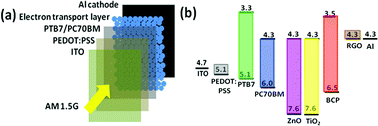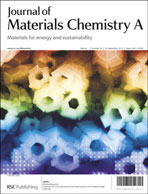Solution processed reduced graphene oxide/metal oxide hybrid electron transport layers for highly efficient polymer solar cells
Abstract
We report new solution processable electron transport layers for organic photovoltaic devices based on composites of metal


 Please wait while we load your content...
Please wait while we load your content...